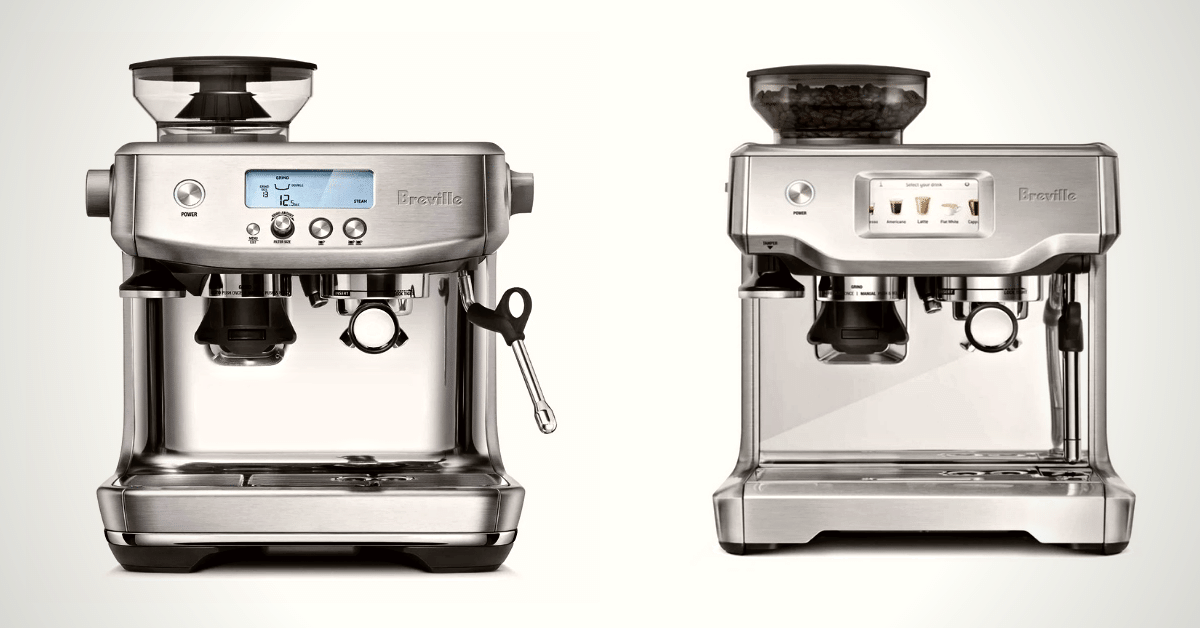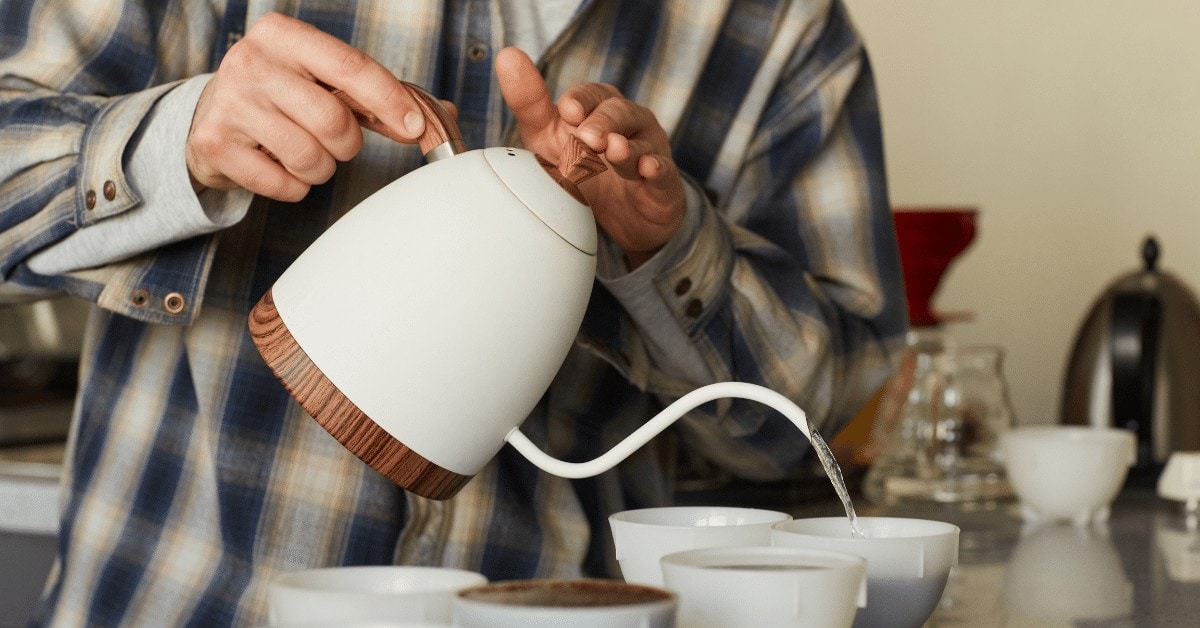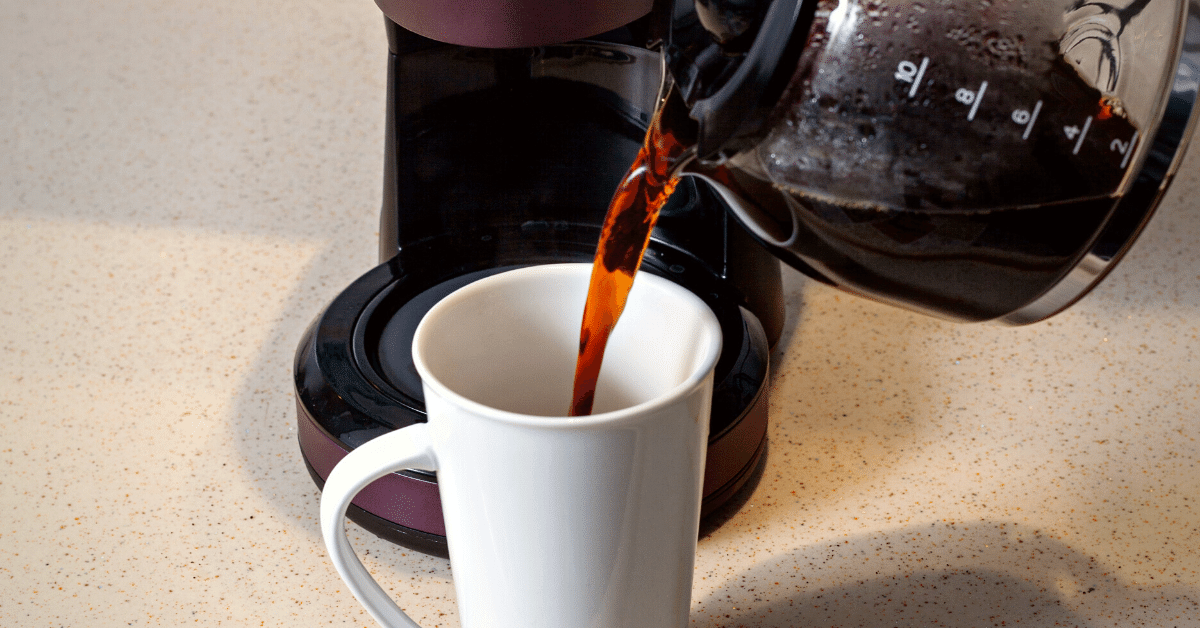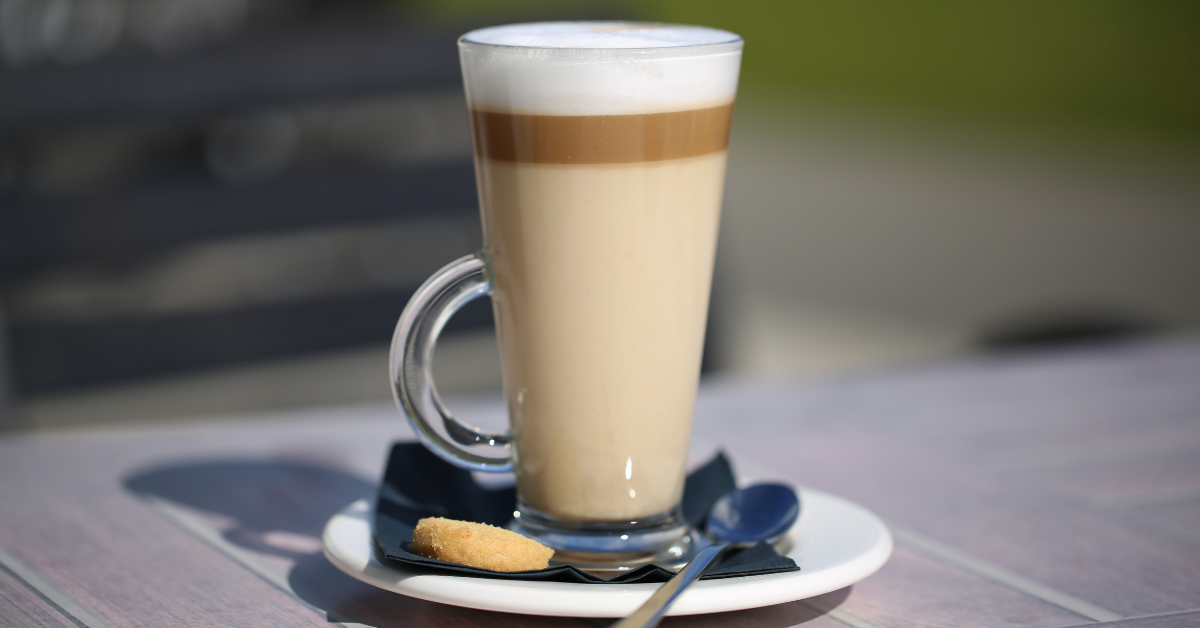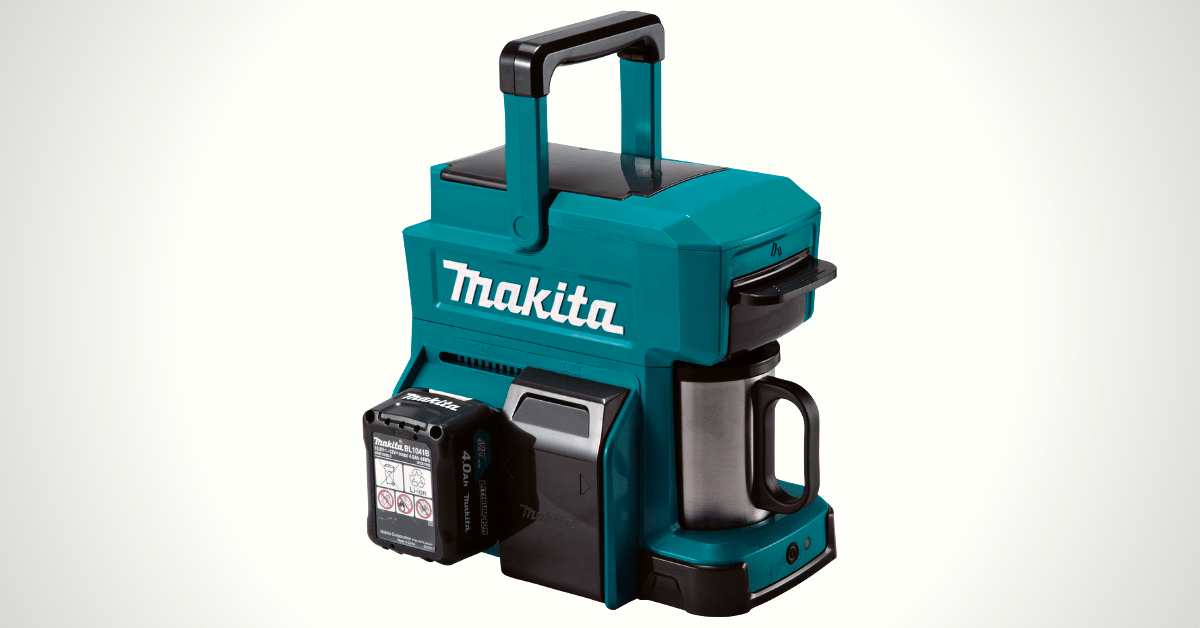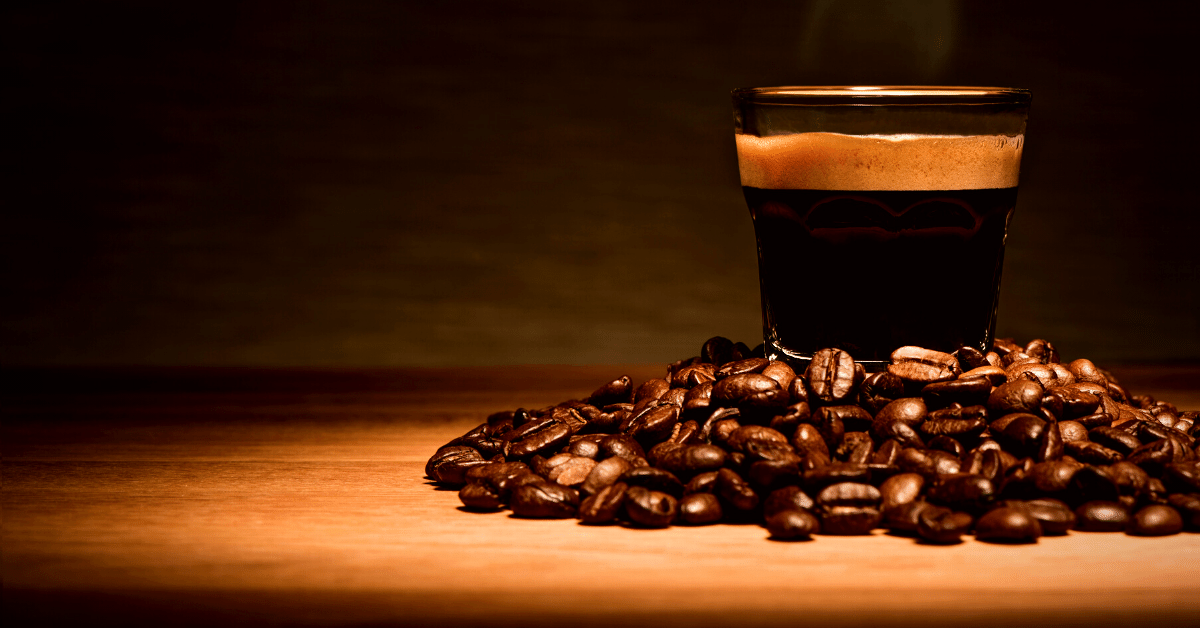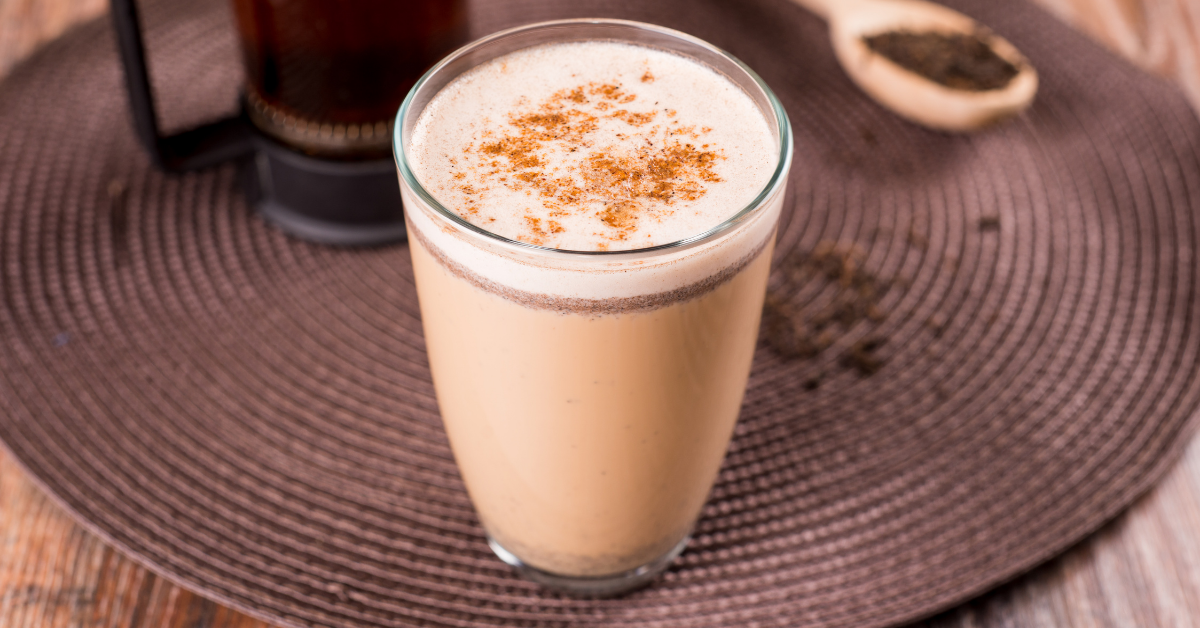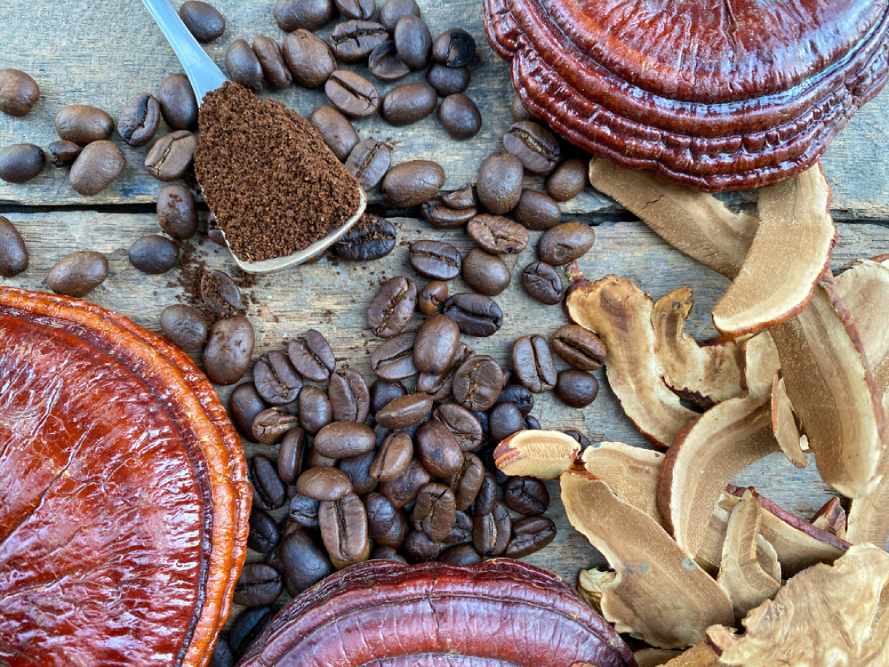In a hurry? Our top choice is the Breville Barista Touch!
Breville makes some of the best entry-level espresso machines on the market.
Two of the better Breville machines are the Barista Pro and Barista Touch.
But which one should you choose?
I’ll walk you through the Breville Barista Pro vs Touch debate and declare a winner.
I’ll give you a rundown of each one and then pit their features head to head.
Let’s get to it!
Breville Barista Pro vs Touch: A Quick Comparison
[affiliatable id=’110180′]
A Quick Chat About The Breville Barista Pro
Breville is an Australian company that’s been in the appliance market for some time.
But their espresso machines are a recent addition. That said, their machines are industry leaders.
The Barista Pro is no exception.
It’s a great entry-level Breville espresso machine.
The Barista Pro coffee machine has a stainless steel body, tactile buttons and an LCD screen interface, and an integrated grinder.
The grinder is especially useful if you’re short on counter space. And the grinder in the Barista Pro has 30 different grind settings, meaning you’ll have a grind setting for any coffee.
The bean hopper and water tank are both sufficient at ½ lb and 67 oz respectively. That’s plenty of beans and water for many drinks before needing to refill.
The Barista Pro is capable of 15 bars of pressure, meaning you’ll get good, even extraction for every coffee.
The only downside is the steam wand. It’s fully manual, so you’ll have to hold and watch your milk while frothing.
Pros
- Integrated grinder with 30 grind settings saves you counter space and means you’ll get consistent grinds
- Big bean hopper and water tank means you can make many drinks in a row without needing to refill
- ThermoJet heating system means your machine is ready to brew in just 3 seconds
- The 15 bar Italian Pump means you’ll get consistent extraction for every coffee
Cons
- Manual steam wand means you’ll need to learn how to froth milk
- The interface feels outdated when compared to the Barista Touch
A Look At The Breville Barista Touch
The Breville Barista Touch is the big sister to the Barista Pro.
It has many of the same features like the grinder, heating system, bean hopper, and water tank size.
But it has some updates.
The interface is fully touchscreen, you can save up to 8 customized drinks, and the steam wand is both automatic and manual.
The Barista Touch’s main update is in the interface. Is that better?
Who’s to say? Personally, I like buttons and tactile sensations, and the touchscreen is known to have some reliability issues.
I do like the automatic steam wand. It’s a hands-free milk frothing option so you can set and forget. It also means you can choose from pre-programmed drinks like lattes or cappuccinos.
The grinder is still integrated into the machine and has the same 30 grind sizes.
The Barista Touch is more expensive. What exactly are you paying for?
Well, for a little convenience. Certainly not for performance.
If you like the touchscreen and the customizable drink options, then it’s a good buy. But if not, then don’t bother.
Pros
- ThermoJet heating system means you can brew in just 3 seconds
- Automatic or manual steam wand gives you options on how to froth your milk
- Touchscreen interface and updated programs gives you a pre-programmed menu and 8 customized drink slots
- 15 bars of pressure ensures you get consistent extraction every time
Cons
- It’s more expensive for convenience and not performance
- Touchscreen has some issue with heavy use
Breville Barista Pro vs Touch: The Rundown
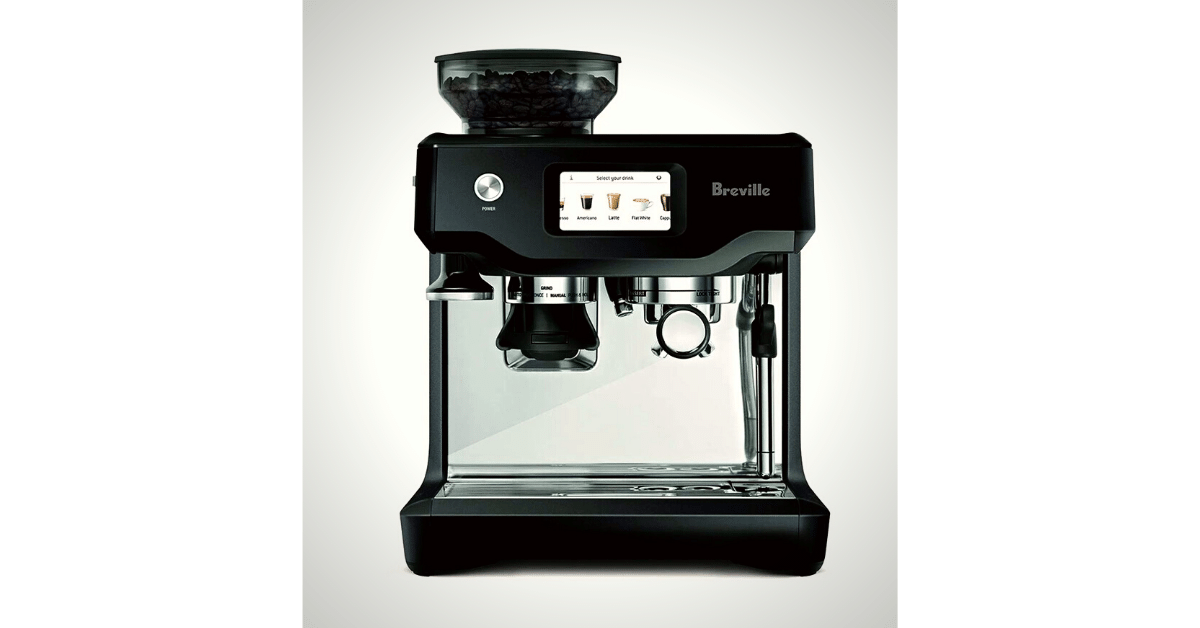
Okay, it’s time to put these two machines head to head and declare a winner.
I’ll walk you through each feature and explain my choice for which one comes out on top.
How are they designed?
The biggest thing I look at when buying espresso machines is the body. Plastic bodies on espresso machines can be fine, but usually, it’s a sign that the company skimped on the materials.
A stainless steel body does more than just look good, it functions as a protection for all the technology underneath.
Both the Barista Pro and Touch have a stainless steel body and plastic bean hopper and water tank.
The fact is, they are pretty much identical when it comes to design. The only difference between them is the interface.
The Barista Pro has buttons and a grind-size dial with an LCD screen. The Barista Touch espresso machine has a full touchscreen display.
Personally, I prefer buttons. With touchscreen displays, I find that you end up scrolling through many screens before finding the correct settings.
With buttons, they’re all up front and in view, which usually means it’s easier to navigate.
The one upside to the touchscreen display is the programmability. The Barista Touch comes with a fully programmed menu and 8 customized drink slots for you to pre-save.
The thing is, though, the Barista Touch is still only semi-automatic. That means you’ll still have to grind, tamp, place the portafilter, and pour the milk yourself.
WINNER
I’m going with the Barista Pro. It’s a personal choice, but having all the buttons on the interface and not hidden behind a touchscreen makes more sense to me when I’m brewing up a latte.
Is there any difference in the grinders?
Grinders are the most important piece of brewing coffee. Without a good grinder, it doesn’t matter how good the coffee bean itself is: you’re going to get a bad cup of coffee.
What is a good grinder? Well, there are two types of grinders out there: blade grinders and burr grinders.
Think of blad vs burr grinders like a garlic press and knife. When you use a garlic press, all the garlic gets shoved through uniform holes and gives you a clove of clean and consistent garlic to use in your recipes.
When you use a knife on the garlic, you can still get decent results, but it will never be as fine or as consistent as using a garlic press.
A burr grinder is a garlic press, and a blade grinder is a knife.
What kind of grinder is in the Barista Touch and Pro?
A hardened steel burr grinder.
Yes, both machines have the same grinder. And both machines have a high-quality grinder that I would actually buy on its own if they sold it separately.
The best part?
It’s integrated into both machines. That means you don’t need to go out and buy another appliance before you start making great drinks.
WINNER
It’s a tie. Both machines have the same high-quality grinder with nothing to separate them.
How do they perform?

How do we measure performance in an espresso machine?
First, we need to understand how espresso is made. Espresso brewing uses pressure to force the hot water through coffee grounds to extract a ton of flavor really quickly.
We measure that pressure by bars, or how many times the atmospheric pressure the water is being forced through the coffee.
Optimal espresso extraction needs 9 bars of pressure.
But do you want a machine that is capable only of 9 bars of pressure?
No.
Actually, you want a machine that’s capable of a lot more than 9 bars.
That’s because you don’t want to use all of your machine’s capability every time you want an espresso drink.
It’s like trying to get an old Toyota Carolla up to speed on the highway versus a supercar. They both will get there, but the supercar will get there much quicker and easier than the Carolla.
The good news about the Barista Pro and Touch?
They have the same 15-bar Italian Pump. And they both have Breville’s ThermoJet heating system.
The Italian Pump is plenty beefy enough to give you consistent and quality espresso. The ThermoJet heating system means you’re ready to brew in just 3 seconds.
WINNER
It’s another tie. They both look identical under the hood, so it’s impossible to pick one over the other purely based on performance metrics.
What are the steam wands like?
When buying an entry-level espresso machine, one of the biggest questions you have to ask yourself is how much you know about milk.
It sounds a little weird, but there are two different kinds of milk steam wands on entry-level espresso machines: manual and automatic.
With a manual steam wand, you’re completely responsible for steaming and frothing your milk.
That means you either have to already know or be willing to learn how to properly steam and froth milk to get a fine milk texture for anything from lattes to cappuccinos.
With an automatic milk frother, all you have to do is fill the pitcher, insert the wand, and choose your milk temperature settings.
I’m not saying one is better than the other. If you want to learn how baristas pour latte art and make velvety lattes, then go for a manual steam wand and get to practicing.
But if you’re looking for a steam wand that’s hands-free, has digital temperature control and is simpler to use, then look for an automatic steam wand instead.
WINNER
I’m going with the Barista Touch Breville machine only because it has both automatic and manual steam wand settings. It’s the best of both options.
How easy are they to use?
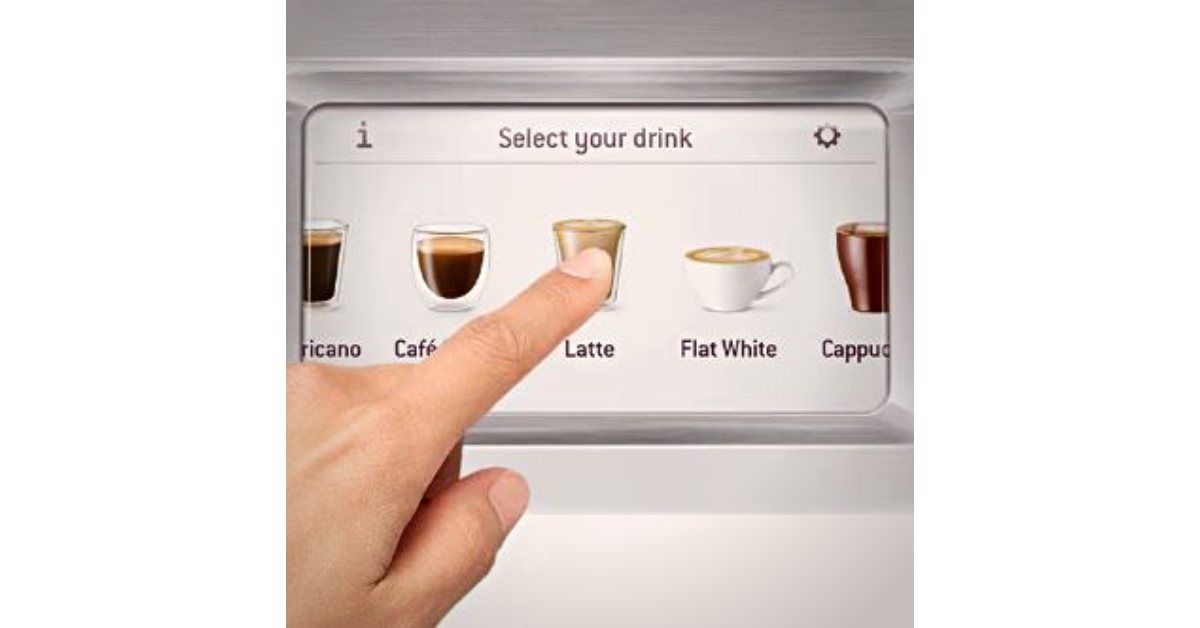
Both the Barista Pro and Barista Touch are entry-level semi automatic coffee machines.
First, what does entry-level mean?
Entry-level espresso machines are simple machines. They are designed for consumers with little to no espresso experience or background.
They are perfect for people who like coffee and want to make espresso at home. Generally, they are easy to use and understand.
Semi automatic espresso machine is the most entry-level machine. Semi-automatic means that the espresso machine takes some of the work of brewing espresso out of your hands.
Basically, all you have to do is grind the beans, fill the portafilter, and steam the milk.
The only piece of the puzzle that semi-automatic machines take control over is the extraction.
With both the Barista Pro and Barista Touch being semi-automatic entry-level machines, is one easier to use than the other?
Only if you want pre-programmed recipes and drinks.
The Barista Touch will walk you through how to create a full menu of espresso drinks and allows you to save up to 8 customized drinks.
But the actual brewing process is the same for both machines.
That said, working with the touchscreen can be difficult to get all the settings just right if you know a little bit about brewing espresso.
WINNER
I’m giving a slight edge to the Barista Touch espresso maker. Only for the pre-programmed recipes. But if you want a little easier time changing brewing settings, then the Barista Pro espresso machine is the way to go.
My Final Verdict
It’s hard to separate these two machines based on performance or quality.
They are pretty much the same machine except for a few key differences.
Based on the steam wand and the interface, I’m saying the Barista Touch is the better option for most people.
You should go with the Barista Touch if:
- You want an automatic steam wand
- You want pre-programmed and customizable saved drink options
- You want an integrated grinder
- You have the budget to spend a little extra
But you should opt for the Barista Pro if:
- You want a budget-friendly machine
- You want a manual steam wand
- You want an integrated grinder
- You want a little easier time changing brewing settings
The bottom line is that these are two great entry-level machines and choosing one over the other isn’t going to make or break your morning coffee.
Both machines are a great choice and you should look at your own needs to choose one.

